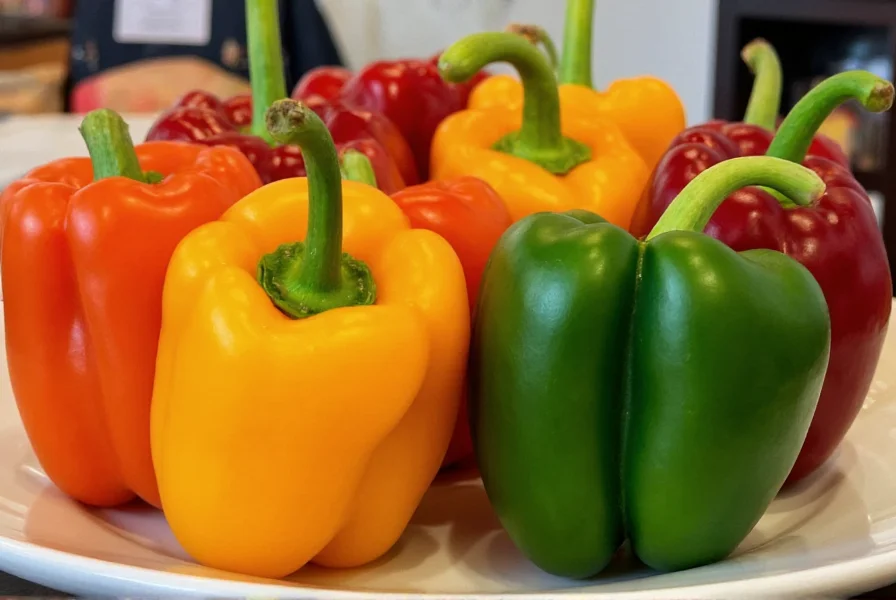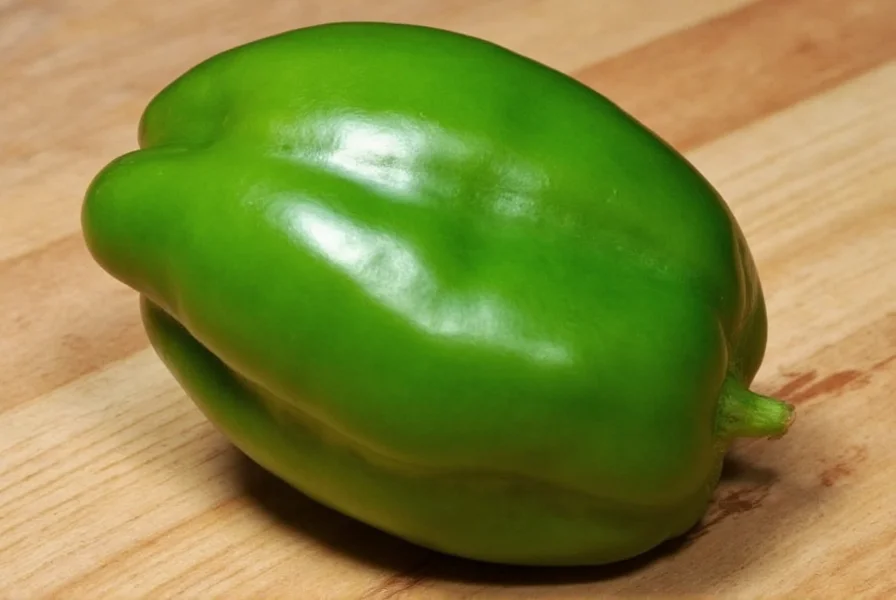Poblano peppers typically measure between 1,000 and 2,000 Scoville Heat Units (SHU), placing them in the mild to medium spice category. They're significantly milder than jalapeños (which range from 2,500-8,000 SHU) and deliver a gentle warmth rather than intense heat, making them ideal for beginners exploring chili peppers.
Understanding poblano pepper heat requires context within the broader spectrum of chili peppers. These dark green, heart-shaped peppers are staples in Mexican cuisine, particularly in dishes like chiles rellenos and mole poblano. While consistently categorized as mild, their actual spiciness can vary based on growing conditions, ripeness, and even individual pepper characteristics.
Measuring Poblano Pepper Heat
The Scoville scale, developed by pharmacist Wilbur Scoville in 1912, remains the standard measurement for chili pepper heat. This scale quantifies capsaicin concentration—the compound responsible for spiciness—through dilution testing. Modern high-performance liquid chromatography provides more precise measurements, but Scoville Heat Units (SHU) remain the common reference.
Poblanos sit comfortably in the lower range of the Scoville scale. For perspective, here's how they compare to other common peppers:
| Pepper Type | Scoville Heat Units (SHU) | Heat Level |
|---|---|---|
| Bell Pepper | 0 SHU | None |
| Poblano Pepper | 1,000-2,000 SHU | Mild |
| Jalapeño Pepper | 2,500-8,000 SHU | Medium |
| Serrano Pepper | 10,000-23,000 SHU | Medium-Hot |
| Habanero Pepper | 100,000-350,000 SHU | Very Hot |
Factors Affecting Poblano Pepper Heat
Several elements influence how spicy your poblano might be:
- Ripeness: Green poblanos (unripe) tend to be milder, while red poblanos (fully ripe) develop slightly more heat and sweeter flavor notes
- Growing conditions: Stressors like inconsistent watering or extreme temperatures can increase capsaicin production
- Individual variation: Even within the same plant, heat levels can differ between peppers
- Seeds and membranes: The white pith and seeds contain most capsaicin—removing these reduces heat significantly
Practical Cooking Applications
Understanding poblano pepper heat helps in recipe planning. Their mild nature makes them versatile for various applications:
When roasting poblanos—a common preparation method—their skin blackens and blisters, which enhances their earthy flavor while maintaining mild heat. The roasted peppers develop a subtle smokiness that complements their natural fruitiness. Many cooks remove the skin after roasting for a smoother texture in dishes like chiles rellenos.
For those concerned about heat sensitivity, consider these tips:
- Always remove seeds and white membranes before cooking
- Start with smaller quantities when incorporating into dishes
- Pair with dairy products like cheese or cream to counteract any unexpected heat
- Test a small piece before adding to entire recipes

Common Misconceptions About Poblano Heat
Several myths persist about poblano peppers:
Many confuse poblanos with pasilla peppers, which are actually dried poblanos with concentrated flavor but similar heat levels. Others mistakenly believe all Mexican peppers are extremely hot, when in reality, Mexico cultivates peppers across the entire heat spectrum.
When recipes call for "ancho chilies," they're referring to dried poblanos. The drying process concentrates flavors but doesn't significantly increase heat—anchos maintain the same 1,000-2,000 SHU range as fresh poblanos.
Understanding how spicy poblano peppers are compared to other varieties helps home cooks make informed choices. Their mild heat profile makes them excellent for introducing children to chili peppers or for dishes where you want pepper flavor without overwhelming spice.
When Poblanos Surprise You
Occasionally, you might encounter an unexpectedly hot poblano. This phenomenon, while rare, occurs due to genetic variation or environmental stressors. If you bite into a surprisingly spicy poblano:
- Reach for dairy products like milk or yogurt—the casein protein neutralizes capsaicin
- Avoid drinking water, which spreads capsaicin rather than dissolving it
- Consider using the pepper in small quantities for dishes requiring more heat
- Store any remaining portions clearly labeled as "hotter than usual"

Conclusion
Poblano peppers offer the perfect introduction to chili peppers for those exploring beyond bell peppers. Their mild 1,000-2,000 SHU heat level provides subtle warmth without overwhelming spice, making them versatile for numerous dishes. Whether roasted for chiles rellenos, dried for mole sauce, or diced fresh in salsas, poblanos deliver rich flavor with manageable heat. Understanding poblano pepper spiciness helps cooks confidently incorporate these versatile peppers into their culinary repertoire while managing heat expectations.
Frequently Asked Questions
Are poblano peppers hotter than jalapeños?
No, poblano peppers are milder than jalapeños. Poblanos range from 1,000-2,000 Scoville Heat Units (SHU), while jalapeños measure 2,500-8,000 SHU. A typical poblano is about half as spicy as the mildest jalapeño, making poblanos significantly more approachable for those sensitive to heat.
Can you eat poblano peppers raw?
Yes, you can safely eat poblano peppers raw. Their mild heat makes them suitable for fresh applications like salads, salsas, and sandwiches. Raw poblanos have a slightly grassy, earthy flavor with gentle warmth. Some people find the thick skin difficult to digest, so roasting and peeling is common for certain dishes, but raw consumption poses no health risks.
Why are some poblano peppers hotter than others?
Natural variation causes differences in poblano heat levels. Factors include growing conditions (water stress increases capsaicin), ripeness (red poblanos are slightly hotter than green), and genetic variation between individual peppers. The seeds and white membranes contain most capsaicin, so peppers with more developed placental tissue will be hotter. Even within the same plant, heat can vary significantly between pods.
How do you reduce the heat of poblano peppers?
To reduce poblano heat, remove all seeds and the white membrane (placenta) inside the pepper, as these contain most capsaicin. Soaking sliced peppers in salt water for 15-30 minutes can further reduce heat. Cooking methods like roasting and peeling also diminish perceived spiciness. For significant heat reduction, consider pairing poblanos with dairy products like cheese or cream in your recipes.
What's the difference between poblano and ancho peppers?
Poblanos and anchos are the same pepper at different stages. Poblanos refer to the fresh, green pepper, while anchos are dried poblanos. The drying process concentrates flavors but doesn't significantly increase heat—they maintain the same 1,000-2,000 SHU range. Anchos develop a deeper, smokier, fruitier flavor profile with notes of raisin and tobacco, making them essential for traditional mole sauces.











 浙公网安备
33010002000092号
浙公网安备
33010002000092号 浙B2-20120091-4
浙B2-20120091-4